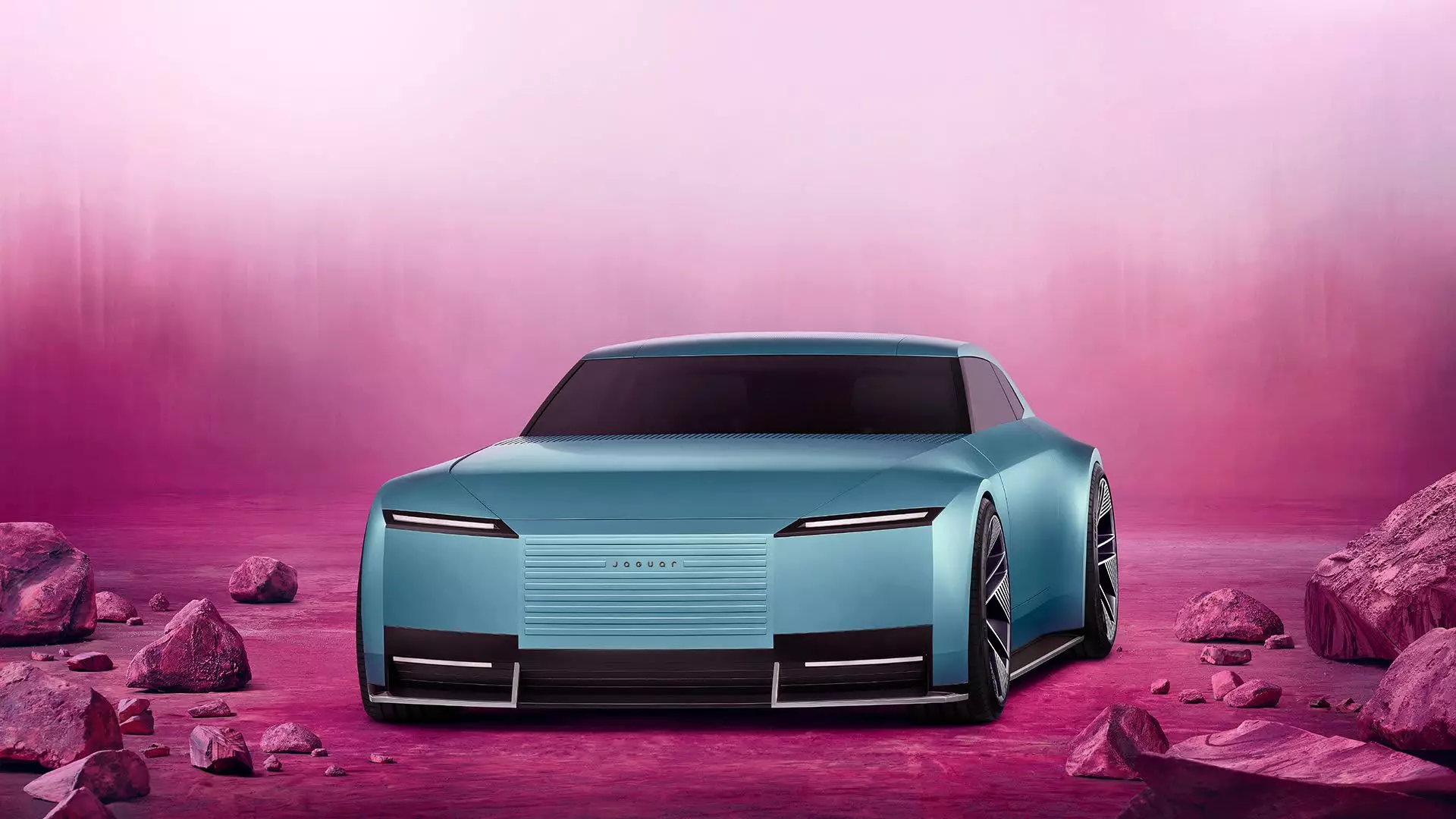In an age where electrification is reshaping the automotive landscape, Jaguar has publicly embraced this shift with the unveiling of its new concept vehicle, the “Type 00.” This announcement highlights not just a new model but a significant change in the brand’s overall design ethos. Unlike the sleek, sporty appeal synonymous with Jaguar’s heritage, the Type 00 adopts a more angular and minimalist aesthetic that some may consider visually bold, while others might find it audaciously garish. The departure from traditional design norms suggests that Jaguar is ready to redefine its identity in the era of electric mobility.
The choice to design a vehicle that is boxy with contemporary features such as sleek lighting and oversized wheels indicates a willingness to experiment and provoke discussion within the automotive community. Concept cars serve as an important barometer for gauging public interest and preferences, and Jaguar’s decision to employ this vehicle as a visual statement could pave the way for future models that challenge conventions.
Jaguar’s ambitions extend beyond mere aesthetics; the company has set ambitious performance projections, forecasting a range of up to 430 miles on a single charge for its upcoming production models. This aspiration underscores the manufacturer’s commitment to competing in the increasingly saturated EV market. Additionally, the promise of rapid charging technology that can provide up to 200 miles in just 15 minutes positions Jaguar to appeal to consumers who prioritize both range and convenience—factors that are critical in winning over traditional petrol vehicle owners.
The strategy of transitioning to electric-only vehicles aligns with growing regulatory pressures and consumer demand for sustainability in the automotive sector. Nevertheless, Jaguar’s roadmap includes navigating numerous challenges that come with such a substantial shift. Various automakers have expressed intentions to pivot fully to electric offerings, yet many have faced setbacks due to unexpected hurdles in market adoption. The path ahead will require Jaguar to invest in technological advancements and build a robust charging infrastructure to support its doing.
In conjunction with unveiling the Type 00, Jaguar also launched a new advertising campaign that introduced the “Copy Nothing” tagline and featured a vibrant video presentation. The campaign, however, has not been without its detractors. Critics pointed out shortcomings in the branding strategy, including the removal of the iconic Jaguar emblem that has represented the brand since the mid-20th century. This decision has drawn ire from long-time fans who view it as an abandonment of the brand’s rich heritage in favor of a modern, possibly overly progressive identity.
Despite the backlash, Jaguar’s management has defended the rebranding efforts as a necessary evolution in a rapidly changing world. The controversial presentation, which notably showcased models in vivid clothing rather than automobiles, has sparked discussions regarding the place of traditional automotive imagery in an era where diversity and inclusion are paramount. While the rebranding aims to provide a fresh identity, it simultaneously raises questions about the balance between innovation and tradition—a challenge for any historic carmaker.
The rebranding and unveiling of the Type 00 come at a tumultuous time for Jaguar, particularly in light of recent decisions to suspend new car sales in the U.K. in preparation for a complete transition to electric vehicles by 2026. The move, part of a broader industry trend, signals a genuine intention to align with the sustainable future of transportation while addressing current market dynamics. As Jaguar endeavors to elevate its brand at an entirely different price point, it faces the pivotal task of redefining its value proposition in the context of electric mobility.
Managing director Rawdon Glover’s assertion that disrupting traditional automotive stereotypes is essential mirrors a broader recognition of changing consumer expectations. In an automotive landscape that challenges norms, Jaguar’s commitment to creativity and bold rebranding indicates both a vulnerability and a resolute desire to innovate.
The unveiling of the Type 00 marks a critical juncture for Jaguar as it navigates the complexities of electric vehicle integration, brand reinvention, and market competitiveness. With both challenges and opportunities ahead, Jaguar’s success will depend on its ability to harmonize its storied past with an ambitious future.

